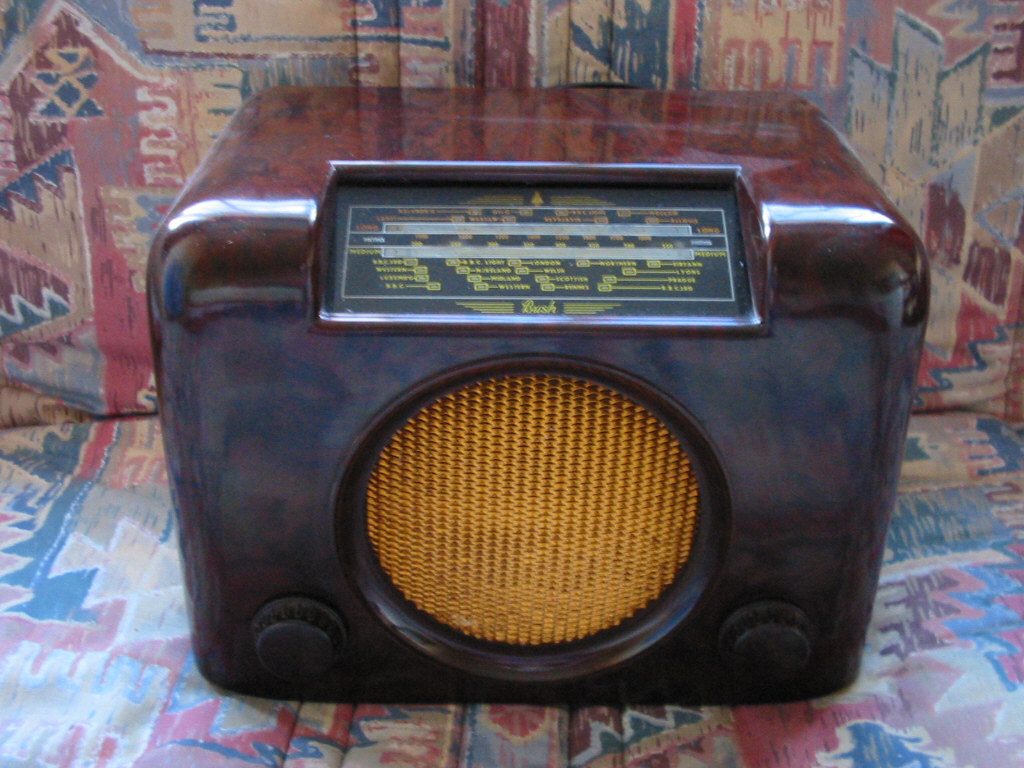Everyone has to own one of these sets before the die. Recent popularity due to Ebay, seems to have emptied lofts, garages of these little sets. It amazes me how many there still seems to be around. As long as the case is in good order (Bakelite) and the dial is okay, these little treasures can generally be brought back to life and work very well.
So, if you are thinking of servicing one, you may find the following of some interest and or help.
Removing the chassis is quite straight forward. Turn the set upside down and you will be able to accesses the screws holding the volume, tuning and wave change knobs in place. If the screws are stuck, don’t force, but inject a bit of WD40 or equiv. 2 screws either side of the chassis to remove it from the case.
If the set is new to you and or has not been powered up for years, treat carefully. If you have a variac to apply power slowly, use that and monitor the current. You could use a 100 Watt light bulb to limit current. There is a filter capacitor across the dropper resistor. Remove that, as it will probably go pop when mains is applied.
All the usual capacitors must be changed. The set originally used Hunts wax covered capacitors in the coupling and decoupling circuits. All of these will have now become electrically leaking. In this set, unlike its brother the DAC10, the components are all accessible. Check resistors have not gone too far out of spec. The dial lights will almost certainly be dead. Changing these for the correct type may not provide enough light for the dial, unless you are wearing night vision glasses. Changing the parallel resistor can help. These form part of the heater chain. There is a Hunts capacitor across the output transformer to remove a HF and keep things stable. The effect of this makes the audio very warm. Reducing the value will help a bit more treble to get through, which I favour.
Once the set is powered up and let’s assume it’s basically working, you may find there is a degree of hum from the speaker. This could be a mix of things. The output valve, UL41 may well have had a hard life due to the coupling capacitor being leaky. This would have upset the flow of angry pixies through the valve, causing it to run hot. Quite often, the insulation becomes tired between the heater and cathode, allowing mains modulation on the sound. Now the capacitors are changed, the only solution here is to replace the valve. Also, you may find the main smoothing capacitors are failing. Surprisingly, these are often found to be quite good. There will be a quiet hum and the HT I halfwave rectified.
Clean the dial lamp bay and diffuser with soapy water. BUT, be careful when cleaning the glass dial. If the set has been stored damp, you may find the print on the underside can be damaged.
There are some other things to look out for, but if you get stuck, you can contact me.
Remember the set is an ACDC set, so, the chassis can be connected to the hot side of the mains. Make sure that the mains plug is wired so that the chassis is at the neutral end. Or, use an isolation transformer if you are too worried. Also worthwhile checking the speaker grill does not assume a potential. I have seen this happen under fault conditions.
The Bakelite case can be cleaned with warm soapy water. There are different polishes available on the likes of ebay. I sometimes use brown shoe polish, especially as I no longer have my brown shoes.
I did see an interesting variation on this set a while ago. It was made for the African market. The LW was replaced with 2 short wave bands and a socket on the back had been fitted for use with a vibrator power pack. The sorry thing was, that the wave-change switch had suffered from carbon tracking, badly. The set had to be hardwired for MW. Can’t be many of these sets around





Cheers